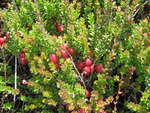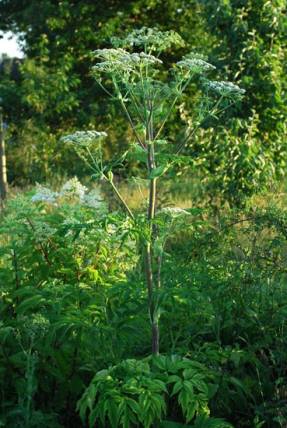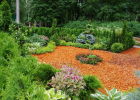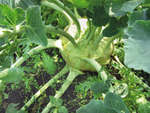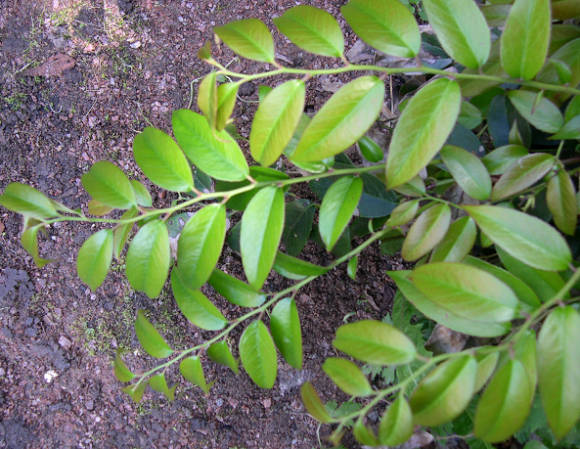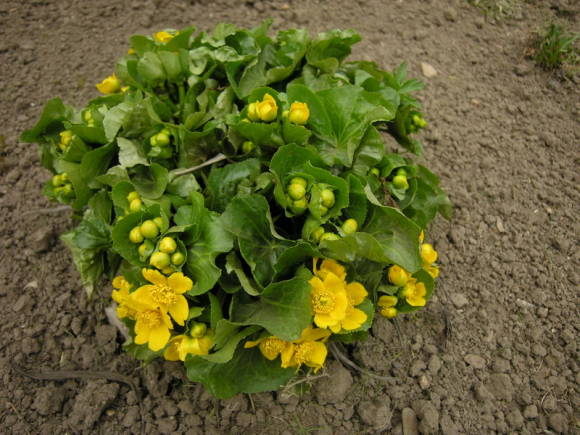
The buttercup family includes a large number of poisonous plants. In the middle zone of the European part of Russia, there are about 20 species of buttercups, most of which contain toxic γ-lactones (protoanemonin, ranunculin) in significant quantities, and therefore are poisonous to one degree or another. The most common and poisonous ones are: poisonous buttercup (Ranunculus sceleratus L.), l. caustic (R. acris L.), l. burning (R. flammula L.), l. creeping (R. reptans). But this vast family is not limited to buttercups only. We have already talked about the hellebore, which is also poisonous and belongs to buttercups. Many members of this family are very beautiful, and therefore they are willingly grown in personal plots as decoration. These are lumbago, aconites. Such plants - beautiful representatives of the buttercup family - can also be attributed to the marsh marigold.
Marsh marigold, perhaps, cannot be attributed to the very famous horticultural crops. But given that in ornamental gardening in recent years it has been quite widely used to decorate reservoirs and as an early flowering plant, it should be remembered that this is not an absolutely safe plant, such as snake mountainweed or marsh calamus. Of course, in terms of its danger, it cannot be compared with aconites, wolf bast or crocus. But still, you should be aware of some of its unpleasant features.
Its numerous popular names indicate mainly yellow flowers, marsh origin or some poisonousness: toad, kalyuzhnitsa, frog, nurse, marsh violets, marsh night blindness, marsh kouloslep, yellow kouloslep, casserole, marsh burdock, marsh marigolds, bovine color, yolk egg.

Marsh marigold (Calthapalustris L.) is a perennial herb of the buttercup family (Ranunculaceae), 15-60 cm tall, with numerous thick, cord-like roots. The stalk is thickened, ascending, hollow inside, branched upward. Leaves are dark green, shiny, crenate along the edge; the lower ones are cordate, on petioles, the upper ones are reniform, sessile. The flowers are large, bright yellow, shiny. The fruit is a multileaf with black shiny seeds. Blossoms in April-May; fruits ripen in July.
The marigold is found throughout European Russia. It grows in swampy meadows, along the banks of water bodies, in swampy alder forests, along streams and ditches.
All plant organs are toxic during any growing season. Poisoning is possible by ingestion of the plant with self-medication.
The chemical composition of the plant has been studied in some detail. Contains alkaloids, saponins, toxic γ-lactones: protoanemonin, anemonin. The whole plant contains triterpenoids (palyustrolide, caltolide, epicaltolide, 16,17-dihydroxycauranic-19 and hederagenic acids), steroids (sitosterol), carotenoids, coumarins (scopoletin, umbelliferone), alkaloids (corytuberine, propinopin), anemopin. In underground organs, the heterocyclic compounds gelleborin were found, which is also contained in hellebores, and veratrin is present in hellebore, also a poisonous plant. Flowers contain flavonoids - kaempferol, quercetin, 7-rhamnoside, 3-glucoside and 3-glucozido-7-rhamnoside kaempferol, 7-rhamnoside, 3-glucoside, 3-glucosido-7-rhamnoside quercetin.
Triterpenoids and coumarins in experiment (mice, rabbits) reduce atherosclerotic damage to the aorta by replacing cholesterol and triglycerides in the liver and aorta.
In past centuries, this plant was used in folk medicine for liver and skin diseases. However, it is currently not used in medicine due to its toxicity. But homeopaths use marigold, collecting the aerial part fresh. Used for skin diseases. But they also have their own doses, homeopathic.
The clinical picture of poisoning. Poisoning phenomena occur from the gastrointestinal tract (colic, bloating, diarrhea) and kidneys (frequent urine flow, discoloration of urine, albuminuria). In addition, these symptoms are accompanied by ringing in the ears, dizziness.
Treatment of poisoning consists in washing the stomach with a suspension of activated carbon in a 2% solution of sodium bicarbonate; saline laxatives are prescribed (25-30 g of magnesium or sodium sulfate), enveloping agents (starch paste, egg white, etc.); but the rest of the measures in the form of droppers and injections are best left to doctors as soon as possible.
In case of burns of the skin and mucous membranes with juice, the affected areas should be rinsed with warm water, lubricated with an alcohol solution of methylene blue, and taken inside with some antihistamine to reduce irritation.
Marsh marigold - ornamental plant

Despite the fact that the plant is poisonous, it is quite possible to plant it on the site as an ornamental plant. Ornamental gardeners value marigold very much as an early flowering, unpretentious and winter-hardy plant that can withstand frosts down to -35 ° C. In early spring, loose brushes of shiny yellow flowers appear on it. The marigold can be planted in areas with excessive moisture and near man-made reservoirs. She prefers sunny places. Naturally, when there is interest in a plant, cultural forms appear that look more impressive. The most famous are the white-flowered and terry forms.
White-flowered form - Calthapalustris var. alba. Loose clusters of milky white flowers appear throughout most of spring and early summer. It is believed that the birthplace of the plant is the Himalayas. It is a well-known ornamental plant suitable for the wettest places.
Terry form - Calthapalustris “Flore Pleno” reaches 30 cm in height and slightly more in width. The flowers have many petals. The plant is distinguished by its compact form and long flowering, it develops well on the banks of reservoirs.
Plants can be propagated vegetatively - by dividing the bushes. Marigold is planted on fertile, loose and well-moistened soil. After planting, watered abundantly. Care consists in weeding and timely watering. A plant can grow in one place for many years. Once every 3-4 years, it is advisable to add a layer of 3-5 cm of fertile and loose compost.

